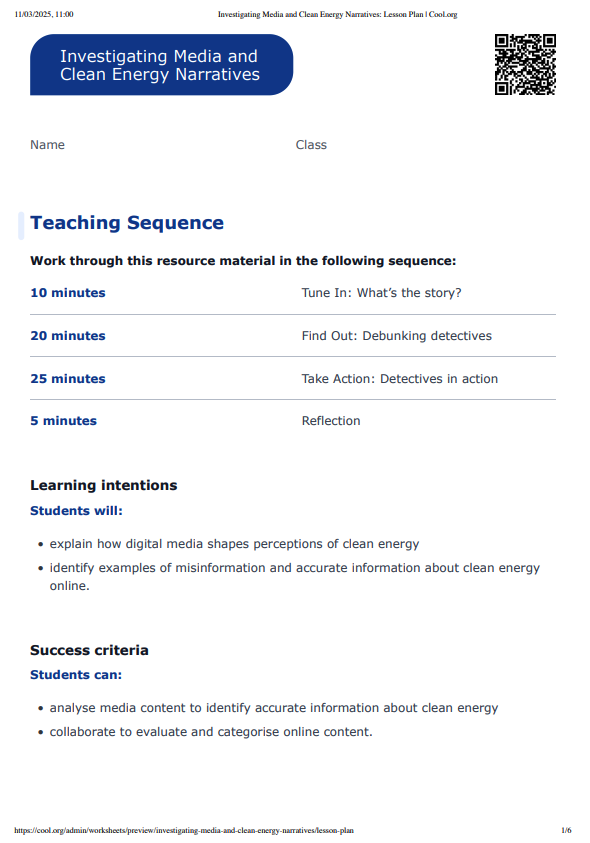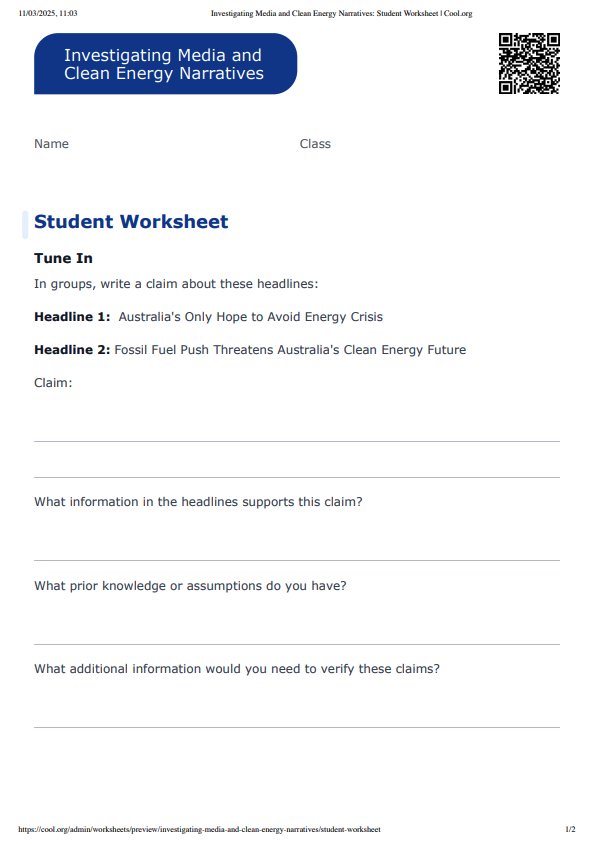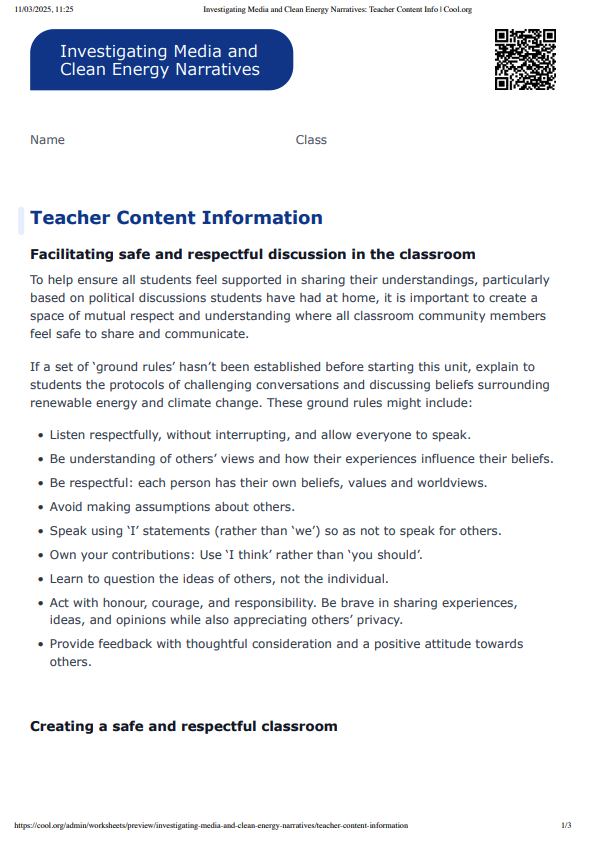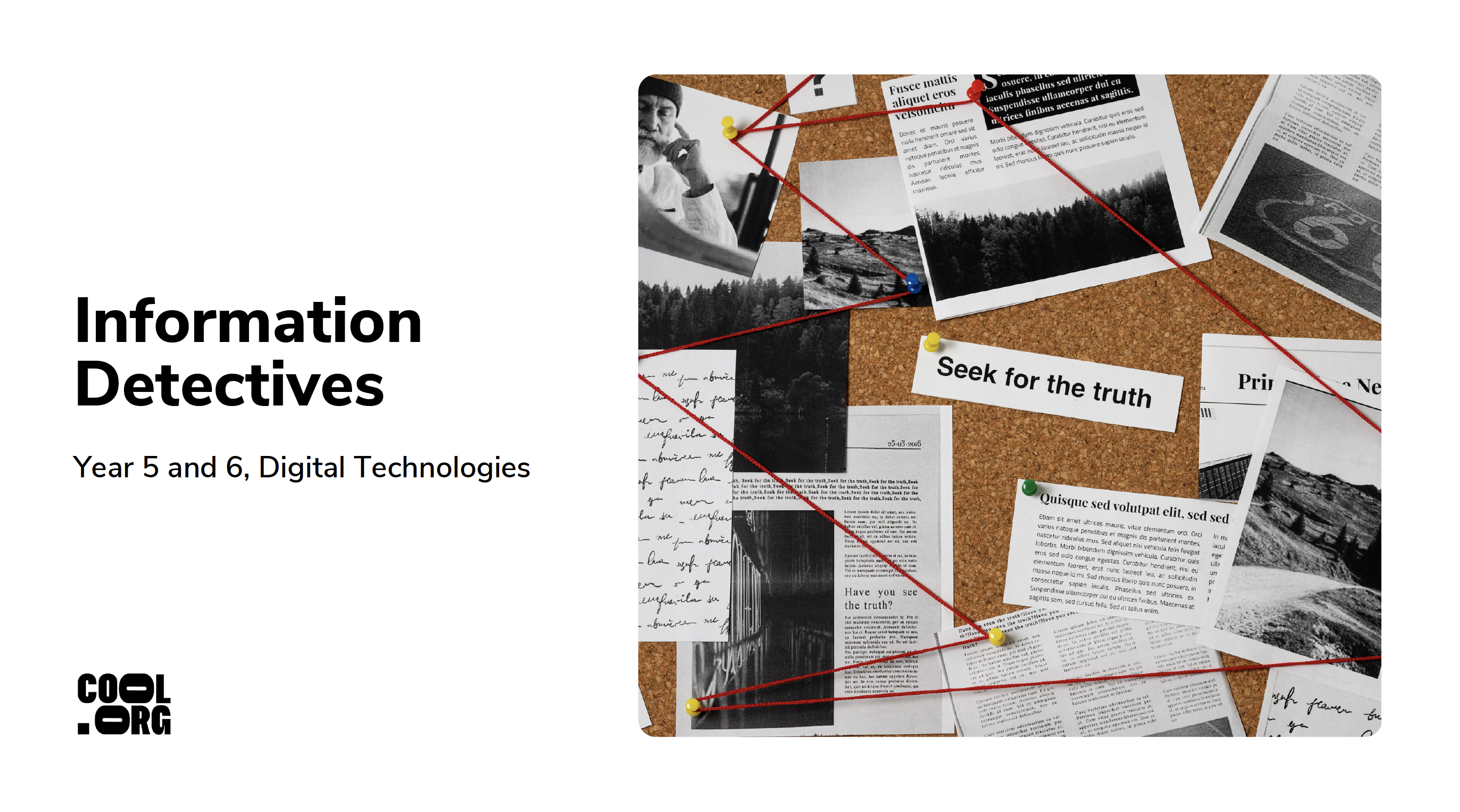Lesson summary
Students will use and develop their critical thinking skills by analysing online content to identify accurate misinformation and disinformation about clean energy. Students will become ‘Information Detectives’ and hone their skills through collaborative tasks, using digital tools to explore online media such as articles, videos and social media posts.
Learning intentions
Students will:
- explain how digital media shapes perceptions of clean energy
- identify examples of misinformation and accurate information about clean energy online.
Success criteria
Students can:
- analyse media content to identify accurate information about clean energy
- collaborate to evaluate and categorise online content.
Lesson guides and printables
Curriculum links
Select your curriculum from the options below.
Lesson details
Skills
This lesson is designed to build students’ competencies in the following skills:
- adaptability
- critical thinking
- collaboration
- communication
- curiosity
- digital literacy
- reflection
Curriculum Mapping
Australian Curriculum (v9.0) content description:
Year 5 and 6, Digital Technologies
Students learn to:
- select and use appropriate digital tools effectively to create, locate and communicate content, applying common conventions (AC9TDI6P07)
- select and use appropriate digital tools to share content online, plan tasks and collaborate on projects, demonstrating agreed behaviours (AC9TDI6P08).
Relevant parts of Year 5 and 6 Digital Technologies achievement standards: Students develop project plans, including production processes, and select technologies and techniques to safely produce designed or digital solutions.
NSW Syllabus outcomes:
A student:
- uses design processes to create, evaluate and modify designed solutions (ST3-DDT-01).
General capabilities: Critical and Creative Thinking, Digital Literacy, Literacy, Personal and Social Capability
Cross-curriculum priority: Sustainability
Level of teacher scaffolding: Medium - the teacher will be required to facilitate discussions throughout this lesson.
UN Sustainable Development Goals
- Target 4.7: By 2030, ensure that all learners acquire the knowledge and skills needed to promote sustainable development, including, among others, through education for sustainable development and sustainable lifestyles, human rights, gender equality, promotion of a culture of peace and non-violence, global citizenship and appreciation of cultural diversity and of culture’s contribution to sustainable development.
Resources Required
- A variety of age-appropriate online articles, videos, and social media posts about clean energy, in addition to the ones provided in this lesson
- Device capable of displaying audiovisual material
- Media analysis checklist factsheet
- Student Worksheet
- Information detectives Visual Explainer
- Whiteboard
Additional Info
Cool.org thanks our philanthropic funder, Boundless Earth for their generous contributions and collaboration in creating these resources.





Welcome back!
Don't have an account yet?
Log in with:
Create your free Cool.org account.
Many of our resources are free, with an option to upgrade to Cool+ for premium content.
Already have an account?
Sign up with:
By signing up you accept Cool.org's Terms and Conditions(Opens in new tab) and Privacy Policy(Opens in new tab).